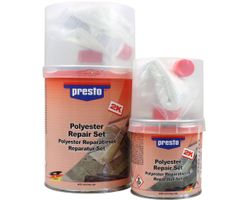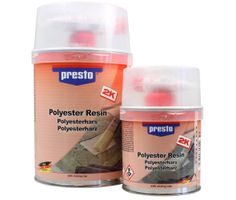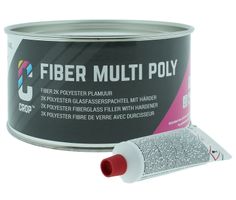Fillers & Putty
Putty
Putty are used to fill holes, cracks and dents in surfaces. With putty, you level the surface to its original shape so the surface is smooth again. Once the filler is dry, you can sand the putty to a smooth surface, then apply a primer or paint for a repair that is invisible. At CROP, you can buy putty from a very large and wide selection.
Types of putty
There are different types of putty to use. It depends on the repair which type of putty is best for your job. In addition to putties in various types, you also have them from different brands of putty. At Nonpaints.com, you have plenty of choice of all types of putty in 1K and 2K.
- Polyester putty
- Fiberglass putty
- Spray putty
- 2 component putty
- Epoxy putty
- Car putty
- Wood putty
Polyester putty
Polyester putty is a filler that is quick to apply, adheres strongly to the surface and you can easily sand after drying. This polyester-based putty is very creamy, allowing you to restore the original shape of the material. Thanks to its high filling power, you level out dents, sanding scratches, cracks, holes and other blemishes. You can buy polyester putty in 1K and 2K quality.
Car putty
Car putty is used on bodywork and parts to repair cracks, dents and holes. A putty for car is flexible and remains elastic after curing, so the putty will not crack when you drive the car again. Want to putty a car? Then use a polyester putty! It is easy to apply, adheres to all materials, and the putty is easy to sand so that the original shape of the bodywork is preserved.
Spray putty
Spray putty is applied by means of a spray or paint sprayer. Because you can spray this special filler, you work faster and this filler is suitable for major repairs. Spray putty you do yourself according to the filler's manual. A spray putty has the highest filling power to level deep dents, holes and cracks. You use spray putty with your paint sprayer when you want to spray a car completely with putty or other large surfaces.
2 component putty
2 component putty has high filling power and strong adhesion to all materials. Because you mix hardener through 2K putty, it is gasoline resistant, rust resistant, acid resistant and chemical resistant. You can use a 2 component putty on wood, metal, plastic, fiberglass, galvanized steel, plastic and aluminum. With a 2K putty, make sure you use the proper mixing ratio with the hardener.
Epoxy putty
Epoxy putty is a filler that has anti-rust and anti-corrosion properties. This special 2K putty with epoxy is widely used on wood, metal, steel, aluminum and iron. The unique thing about an epoxy putty is that the filler does not shrink and remains flexible. This makes it an excellent putty for wood to fill holes and cracks.
Wood putty
Wood putty is used as a renovation paste to repair holes and cracks in wood. In addition, repair wood rot with this special putty for wood. The renovation paste for wood is a 2 component putty on polyester base that dries quickly easy to process. After the wood putty is dry you can finish it with stain, varnish, paint and other types of lacquer. The renovation paste is ideal as a wood putty for window frames, doors, windows and door frames.
How to apply putty?
You apply putty yourself using a special mixing board and putty rubbers, spatulas or knives. A putty knife is flexible so you can apply the putty evenly. In addition to special spatulas, there is also a putty rubber that molds to the surface. This gives you a professional result while applying the putty.
Tips for using putty
When you start using putty, you need to process the filler correctly. If you have no experience with putty, we will give you some tips that you can use when applying it. With our tips for using putty, you can be sure that you are mixing and applying putty the right way.
- Always mix putty on a flat and non-porous surface to avoid losing resin. Use a putty mixing board for this purpose.
- The putty should be applied a maximum of 3mm thick. If a thicker layer is needed, apply the filler several times.
- Never wet sand putty.
- Always choose the right putty for your repair job. In doubt? Ask our product specialists to help you choose.






